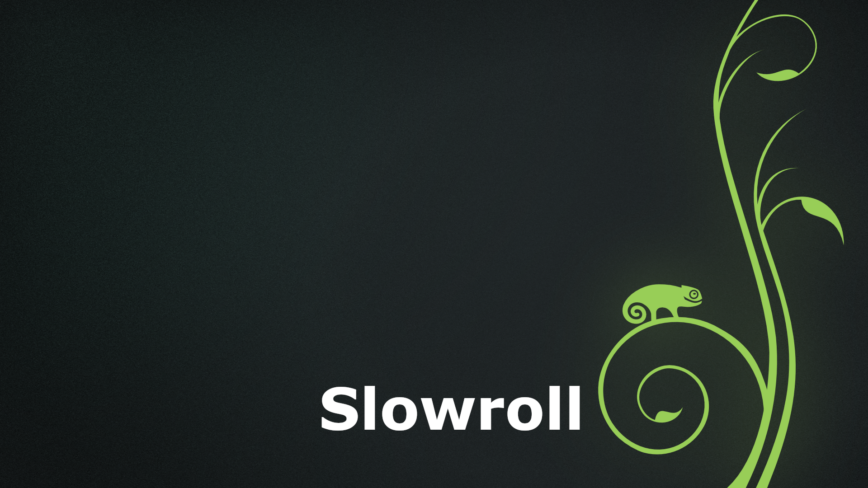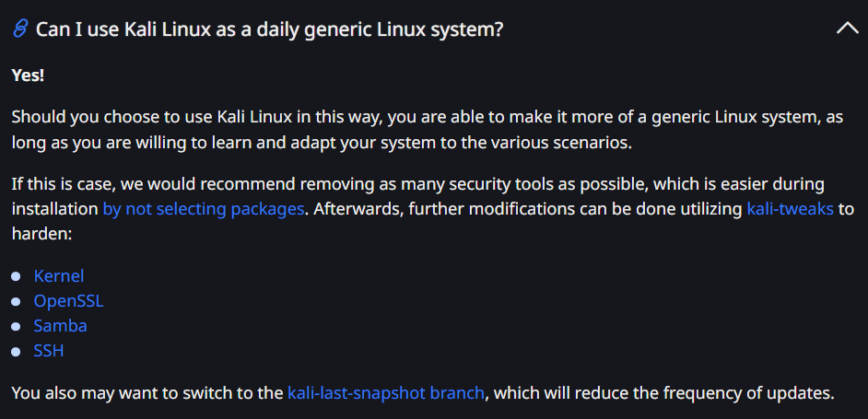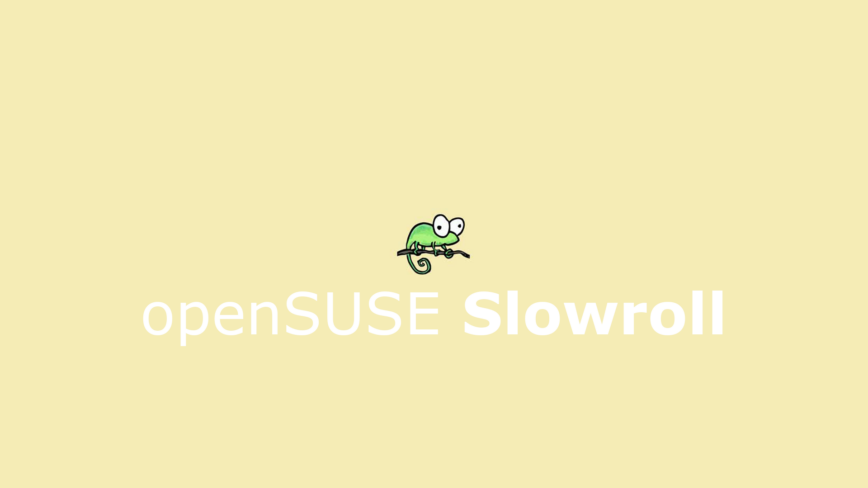9 Most Stable Linux “Rolling Release” Distributions
Choosing a rolling release Linux distribution means you get the latest software without having to reinstall the OS. But not all Linux rolling releases are created equal in terms of stability. Hopefully, this guide will help you select the best balance between the most up-to-date and most stable rolling release Linux distribution.
Note: These rankings are based on my personal experience and testing, so your mileage may vary depending on your use case and preferences. Feel free to share your thoughts, suggest changes, or provide your own ranking from least to most stable based on your testing.
What is a Rolling Release Linux Distribution?
A rolling release Linux distribution is an operating system that never requires a major version upgrade. Unlike fixed-release distributions like Ubuntu, Debian Stable, or openSUSE Leap which get updates in big versioned releases, rolling release distros update packages incrementally.
Pros of Rolling Releases
- Always up to date with the latest software and kernels.
- No need to do major version upgrades that require a system reinstallation.
- Perfect for users who want the latest features and improvements as soon as possible.
Cons of Rolling Releases
- More updates can bring instability or breakage.
- Often requires more manual and more frequent maintenance.
- Not for users who want the most stable system and is ok with running older software.
Most Stable “Rolling Release” Linux Distributions (ascending order)

In this article, “stability” refers to how well a rolling release distribution handles updates without breaking system functionality. This includes factors such as regression frequency, thoroughness of update testing and likelihood of encountering critical bugs after an update.
Objective metrics like bug tracking systems, distro release notes and community feedback have also been considered. The distributions are ranked in ascending order of stability—the least stable appears first, and the most stable appears last.
9. Manjaro Linux
- Why? Manjaro is based on Arch Linux but delays updates for additional testing, so breakages are reduced. While more stable than Arch itself, it still inherits the risks of a fast-moving rolling release. It’s good for users who want Arch with a safety net.
- Downside: Less bleeding edge than Arch, but still has rolling risks.
- Ideal for: Users who want an Arch-based experience with added stability.
- Update Frequency & Testing Process: Manjaro delays Arch Linux updates for extra testing, so there’s a buffer against breakages. Updates are less frequent.
8. Arch Linux
- Why? Arch Linux is a pure rolling release distro that provides the latest software as soon as it’s available. While it offers a high degree of customization, it lacks extensive testing before updates, meaning breakages can happen and users need to troubleshoot. So it’s less stable than some more curated rolling releases.
- Downside: More frequent breakages, require more manual troubleshooting.
- Ideal for: Advanced users who want total control over their systems.
- Update Frequency & Testing Process: Arch Linux updates are frequent, sometimes multiple times a day, there’s a testing repository where new or updated packages reside briefly for public testing before they migrate to the main repositories. It’s not as lengthy or rigorous testing/delay as with other rolling distributions. As such, stability will largely depend on the user and how well they manage, vet, and time updates.
7. Gentoo Linux
- Why? Gentoo is a rolling release that compiles everything from source, so you can have extreme customization. While highly stable when configured properly, the complexity of maintaining a Gentoo system makes it less beginner-friendly. Stability depends a lot on user expertise.
- Downside: Time-consuming setup and maintenance; requires compilation.
- Ideal for: Advanced users who want full system control.
- Update Frequency & Testing Process: Gentoo is a true rolling release, but even the update frequency will depend on the user’s selections when compiling software from source. As such, updates are customizable and generally less frequent and more controlled than binary-based rolling releases. Like Arch, this distro is geared more towards advantages users who can manage it well.
Note: Gentoo defaults to the OpenRC init system, not systemd. However, Gentoo’s flexibility means you can choose systemd if you prefer.
6. SparkyLinux (Rolling Edition)
- Why? SparkyLinux’s rolling edition is based on Debian Testing, so it’s a mix of the latest software with Debian’s stability. But it’s not as stable as Debian Stable and may require occasional troubleshooting.
- Downside: Less stable than Debian Stable, but more stable than Arch-based distros.
- Ideal for: Advanced users, whose not afraid of a little less stable version of applications, and want to work with/on latest version of offered the software.
- Update Frequency & Testing Process: SparkyLinux follows Debian Testing, so updates come moderately, every few days and are slightly more stable than pure bleeding-edge rolling releases.
5. PCLinuxOS
- Why? PCLinuxOS is a user-friendly rolling release initially based on Mandriva over a decade ago, but over time became an independent distribution with its own package management system (APT-RPM) and rolling release model. It prioritizes ease of use and stability, so it’s good for users who want a rolling release without the maintenance overhead of distributions like Arch or Gentoo.
- Downside: Smaller community and repository than mainstream distros.
- Ideal for: Users looking for an easy-to-use rolling release.
- Update Frequency & Testing Process: Updates are released regularly, but cautiously because there is a lot of emphasizes on stability. Security updates are usually pushed the same day, updates for applications and features are available within a few days following their readiness.
Note: PCLinuxOS avoids systemd and does not allow packages that have hard dependencies on systemd.
4. Kali Linux (Generic Rolling Edition)

Follow my guide to using Kali Linux as a daily generic rolling-release Linux system.
- Why? Also based on Debian Testing, Kali Linux follows a rolling release model but by default is designed for penetration testing and security research.
- Downside: Security tools can introduce instability, so, for max stability and security, do not install any pen-test tools during the installation wizard.
- Ideal for: Cybersecurity researchers or those who just want recent Debian-testing packages in a stable rolling-release.
See my full guide: Kali Linux non-root and no pen-test tools install w/ screenshots. (most recent setup) - Update Frequency & Testing Process: Updates are moderately frequent. Devs are very involved in testing, so will often patch and fix bugs within 24 – 48 hours. Kali has excellent documentation and a large community.
3. Solus Linux
- Why? Solus is a curated rolling release distribution for desktop use. It delays updates to ensure stability before rolling them out. So Solus is one of the best rolling releases for general desktop users who want a stable and hassle-free experience.
- Downside: Smaller package repository than Debian/Arch-based distros.
- Ideal for: Desktop users looking for a polished and stable rolling release experience.
- Update Frequency & Testing Process: Solus is a curated rolling release, so updates are tested before release. Updates usually every 1-2 weeks to ensure system stability.
2. Void Linux
- Why? Void Linux is a lightweight rolling release distribution that avoids systemd in favor of runit. It’s a minimal and stable system with updates that rarely break. Good for users who want simplicity and control.
- Downside: Smaller package repositories; requires more manual config.
- Ideal for: Users who want a stable, minimal rolling release.
- Update Frequency & Testing Process: Void Linux is a rolling release with less frequent updates. Void focuses on stability, rather than on being bleeding-edge. Install once, update routinely and safely. Updates are more carefully integrated.
Note: Void Linux uses runit as its init system instead of the more common systemd used by other distributions.
1. openSUSE Tumbleweed
- Why? openSUSE Tumbleweed is the most stable rolling release, thanks to its rigorous QA process using Open Build Service (OBS) and openQA testing. Updates are thoroughly tested before release, so it’s good for those who want bleeding-edge software and stability.
- Downside: Not as bleeding edge as Arch, but much more stable.
- Ideal for: Users who want a stable rolling release without frequent breakages.
- Update Frequency & Testing Process: openSUSE Tumbleweed has a strict automated testing process (openQA) before updates are released. Updates are frequent, but far less likely to break than bleeding-edge rolling releases.
Other Noteworthy mentions

openSUSE Slowroll uses a modified version of openSUSE Tumbleweed.
openSUSE Slowroll
- Why? Slowroll offers a well-balanced option for those who prefer a steady yet up-to-date Linux experience. This would be #1 in the above list, however, keep in mind that it’s still in beta.
- Downside: Not updated as frequently as Tumbleweed; still in early stages.
- Ideal for: Users who want a rolling release but a more conservative update approach.
- Update Frequency & Testing Process: openSUSE Slowroll is a modified version of openSUSE Tumbleweed, designed for users who seek a more stable experience without committing to the long release cycles of openSUSE Leap. It provides a middle ground between the fast-paced updates of Tumbleweed and the extended release schedules of Leap, which span 12 months for minor updates and 3 to 4 years for major releases. With major updates delivered once per month, alongside continuous bug fixes and security patches.
Fedora Rawhide
- Why? NOT very stable, Fedora Rawhide is the rolling development branch of Fedora, with daily updates and the latest software. But it’s meant for testing and development, not production use, so it’s one of the least stable rolling distributions.
- Downside: High risk of breakages; for developers and testers. Usually, you should avoid switch to it.
- Ideal for: Fedora contributors and developers who need early access to features.
- Update Frequency & Testing Process: Fedora Rawhide gets daily updates with minimal pre-release testing. It’s a development branch for testing new features before they hit Fedora Stable, so regressions are common.
NixOS (Unstable Channel)
- Why? NixOS offers a rolling release branch that provides the latest software, but since it is the unstable branch, it is prone to frequent breakages. While Nix’s declarative configuration helps mitigate issues, it is not the best choice for users seeking stability.
- Downside: Steep learning curve and experimental nature.
- Ideal for: Users interested in reproducible builds and declarative package management.
- Update Frequency & Testing Process: NixOS Unstable receives frequent package updates, often daily. Updates can introduce breakages, especially for users who do not pin package versions.
Immutable Linux Distros
A new breed of Linux distros has emerged to solve a long-standing challenge of Linux: the balance between stability, security, and flexibility. Immutable Linux Distros are for the growing number of Linux users who want an even more predictable and stable Linux experience. Read more: Immutable Linux Distros: Are They Right for You? Take the Test.
- Frequency & Testing Process: Immutable rolling releases like Fedora Silverblue, openSUSE MicroOS and Endless OS are rolling updates with atomic updates. So the system state doesn’t change unless the update is fully successful, minimizing the chance of system breakage.
Conclusion
Rolling releases have many benefits: always up-to-date software, but stability varies a lot. If you want the most stable rolling release, openSUSE Tumbleweed, Void Linux, Solus are the way to go. If you want the latest features and don’t mind breakages, Arch Linux, Manjaro, Fedora Rawhide are the options with varying degree of reliability.
Your choice depends on your own required balance of stability, software freshness and time requirement involved.
This didn’t make the article because I haven’t worked with it enough, but Guix is also a rolling-release Linux distribution—built on the Guix package manager.
Unlike traditional rolling distributions, Guix employs a declarative approach. A declarative approach means instead of manually installing and configuring software, you describe the system state in a configuration file. The system then ensures it matches that description.
For example, in Guix, you can install packages with
guix install <package>, similar toapt installordnf install. However, Guix also allows users to define their entire system declaratively in a configuration file. If you change this file (e.g., add or remove software), Guix rebuilds the system accordingly, ensuring a reproducible and rollback-friendly environment.This allows:
Reproducibility – If you set up another system with the same config, it will be identical.
Rollback – Since system states are tracked, you can undo config/system changes.
This means a higher level of system integrity than traditional rolling releases, where you need to manually fix things after an update.
Because its package management is different from traditional tools like apt, dnf or pacman, the learning curve is also steeper for newcomers like me.
Also, its repository is smaller than mainstream distributions, so you may often need to package or build things yourself.
That said, its definitely worth spinning up in your home labs, as a starting point. Also see: System Configuration (GNU Guix Reference Manual)
Never heard of Guix, but it sounds like NixOS. Now I know what I’m going to test next
Yes, very similar. If you prefer easy access to proprietary software, NixOS is better since GNU Guix only includes libre software by default.
One thing I’d add is that while Guix’s focus on libre software is admirable, it might be limiting for users needing proprietary drivers or codecs, where NixOS could be a more practical choice.
Still, both NixOS and Guix are nice alternatives to classic package managers, especially for those who want to maximize system integrity and customization.
Nice article. I’m glad you put Manjaro at the bottom of the list; I’ve tried it multiple times; it didn’t make it even a day the most recent time; I noticed they produced another image quickly, so maybe they fixed their problems.
Regarding Gentoo Linux, unless there is a fully prepared image available, I’ve found it too cumbersome to build with not enough payback to make it worthwhile; since I know how to build code, that’s not a motivation for spending a ridiculous amount of time putting it together.
I’ve enjoyed PCLinuxOS for many years; it’s one of my favorite rolling release distros. I’ve not done much with Void, but I’ve read positive things about it.
I completely agree with you that openSUSE Tumbleweed is the most stable, consistent rolling release. I’ve never once had a problem with it.